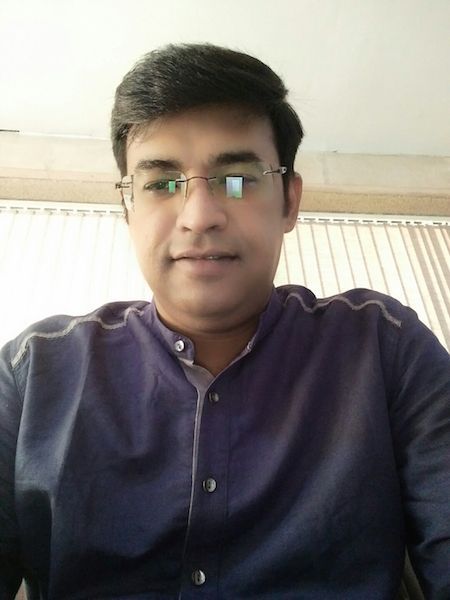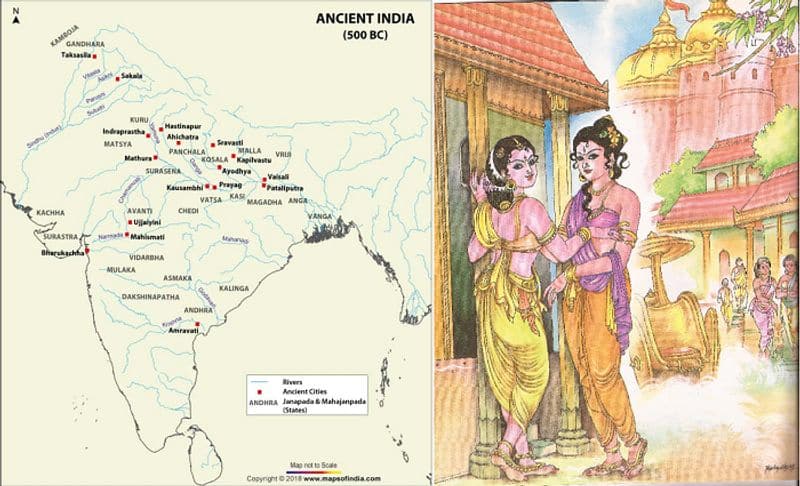Next time, do not let a ‘modernist’ look down upon the culture of this nation, based on hearsay and half-baked knowledge received from some newspaper columnists or graphic novelists. Happy International Women’s Day!
On the International Women’s Day, MyNation presents a list of daughters and wives of sages in ancient India who challenged scholarly men with knowledge. The men, both scholarly and ordinary, of that era not only accepted but also celebrated these illustrious women.
Hopefully, this would enlighten a section of the modern crowd that is not only blissfully unaware of the nation’s heritage but also patronising or condescending towards the eternal civilisation of the land that lies to the east of the Indus.
Importantly, on this occasion, misogynists and feminists alike must be told what position women held in the shastras (scriptures) as well as the documented history of Hinduism and India.
Maitreyi
Maitreyi was a brahmavadini. The term refers to an expounder of a Veda. A brahmavadini is a woman, some of whose hymns made their way to one of the four Vedas.
In the RgVeda, 10 out of around thousand songs are composed by the woman seer and philosopher Maitreyi, first of the two wives of Yajnavalka.
According to the Hindu sacred texts, Maitreyi was so knowledgeable that she became a brahmavadini. Katyayani, the second wife of Yajnavalka, was an ordinary woman. Maitreyi had an immense contribution to improving her sage-husband Yajnavalkya’s personality. She also helped shape his spiritual thoughts.
Before Yajnavalkya renounced the world with a vow, he chose to make a settlement of his possessions between his two wives. Both the wives were asked about their wishes. The scholarly Maitreyi asked if all the material riches in the world would make her eternal and immortal. To her question, the sage answered that riches could just make one monetarily rich and nothing else. Maitreyi then requested the wealth of immortality from Yajnavalkya, who was happy to hear this.
Yajnavalkya imparted Maitreyi the knowledge of the atman — doctrine of the soul and his knowledge of attaining immortality.
Gargi
Gargi was the daughter of Vachaknu, the Vedic prophetess. Gargi was another notable brahmavadini who composed hymns that questioned the origin of existence and delved into the origin of all that is present.
When a brahmayajna was organised by King Janaka of Videha, Gargi was one of the famous members of the philosophical congress convened on the occasion.
Sage Yajnavalkya's conceptualism of the atman was tested before the congress above with a series of probing questions by Gargi. Atman had bewildered the educated sage for a long time and he had, till then, silenced numerous scholars. Gargi had tricked even the sage by asking, “The layer that is above the sky and below the earth, which is described as being situated between the earth and the sky and which is indicated as the symbol of the past, present and future, where is that situated?”
A brahmayajna in the Shakta philosophy is one of the five ultimate sacrifices, presided over by Chhinnamasta, one of the 10 mahavidyas, where the practitioner tries to please Brahma, the creator, with the knowledge acquired from sages. In Dharmashastra (religious law), brahmayajna refers to the daily teaching of Vedas. In the Puranas, it is a ritual to be performed by Brahmins exclusively.
Sulabha
Another woman who had the knowledge and audacity to challenge King Janaka was Sulabha although her work appears in details not in the Ramayana but in the Shanti Parva (chapter of peace) in the Mahabharata.
Sulabha was single. In the chapter in the Mahabharata where an episode of the Ramayana is recalled, Janaka tests Sulabha by playing the devil’s advocate, deliberately sounding misogynistic to know how the woman intellectual counters his arguments.
Sulabha gave her own example and that of a married woman to establish in the court of Janaka that women can achieve what men can not only while being dedicated to some work but also while multi-tasking.
Madalasa
Imagine your baby is crying, and in the lullaby you croon to soothe the child, you actually impart spirituality to the little one! This is what Queen Madalasa, wife of King Ritadhwaja aka Kuvalayaswa, did.
So inspiring were her teachings that all her four children Vikranta, Subahu, Shatrumardana and Alarka gave up the kingdom and estates they inherited and turned ascetics. This story appears in Markandeya Purana.
Ghosha
Ghosha was the granddaughter of Dirghatamas and daughter of Kakshivat. Of the thousands of Vedic hymns, two were composed by her.
Dirghatamas and Kakshivat composed hymns in praise of Ashwins, the physician twins. Inspired by them, Ghosha composed two hymns, each containing 14 verses, which appear in the tenth book dedicated to her.
Ghosha's first hymn praises the Ashwins and the second one is an individual wish, in which she communicates her intimate feelings and yearnings for a wedded life as she suffered from a serious disfiguring disease and remained unmarried at her father’s home. The dedication of her forefathers towards the Ashwins and her imploring with them made them cure her illness and she was finally able to experience marital bliss.
Lopamudra
Lopamudra was created by Agastya as a girl child and given to the King of Vidarbha for adoption. Lopamudra received the best education of the time but she abandoned the worldly pleasures of royal life and went back to Agastya despite the sage's vow to remain poor and celibate. The RgVeda consists of long discussions between the sage and his wife Lopamudra during which the knowledge and integrity were granted to her.
Serving the spouse for a long period drained Lopamudra out. After years of austerity, she composed a hymn of two stanzas in which she pleaded for the sage's attention and affection. Following that, the sage understood his obligations towards his wife. He started fulfilling both his household and ascetic dharma with equal energy. Agastya reached a wholeness of spiritual and physical powers and they were blessed with a child who was named Dridhasyu. Dridhasyu later turned into an extraordinary poet.
If you presumed the stories above were myths not supported by documented history, consider late ancient and early medieval India.
Bhamati
So impressed was Vachaspati Mishra with the devotion of his wife that he named his commentary on Adi Shankaracharya’s Brahmasutra Bhashya after her: Bhamati. This was 10th century AD.
Mishra recognised that it was possible for him to concentrate on his work only because his wife made it unnecessary for him to be concerned about the household.
This was a marriage where the groom had made it clear at the stage of the proposal that he might not be able to fulfil the duties of a husband as he was dedicated to his work. The condition was accepted by the bride.
When that work was concluded, Mishra saw this woman sitting next to him and was startled. On asking, she said she was Bhamati, his wife. Mishra was floored. His seminal work would not have been possible without the concentration Shankara’s treatises demand if there had been anything about the family that he had to spare a thought about.
Khana
This is closer to our times. The estimated period when Khana lived ranges from the 9th to the 12th century AD as per varying accounts. She lived in the Deulia village, Chandraketugarh, near Berachampa in Barasat, North 24 Parganas of what is now Bengal.
The daughter-in-law of mathematician Varahamihira (among the Navaratnas of Chandragupta II Vikramaditya's court), Khana made astronomical calculations that were more accurate than her celebrated father-in-law’s.
But this is also where the decline of Hinduism had begun. Khana’s tongue was severed to stop her prophetic utterances from embarrassing reputed astrologers by proving them wrong.
Conclusion
Next time, do not let a ‘modernist’ look down upon the culture of this nation, based on hearsay and half-baked knowledge received from some newspaper columnists or graphic novelists. Happy International Women’s Day!
Last Updated Mar 9, 2019, 1:34 PM IST











![Salman Khan sets stage on fire for Anant Ambani, Radhika Merchant pre-wedding festivities [WATCH] ATG](https://static-ai.asianetnews.com/images/01hr1hh8y86gvb4kbqgnyhc0w0/whatsapp-image-2024-03-03-at-12-24-37-pm_100x60xt.jpg)
![Pregnant Deepika Padukone dances with Ranveer Singh at Anant Ambani, Radhika Merchant pre-wedding bash [WATCH] ATG](https://static-ai.asianetnews.com/images/01hr1ffyd3nzqzgm6ba0k87vr8/whatsapp-image-2024-03-03-at-11-45-35-am_100x60xt.jpg)



